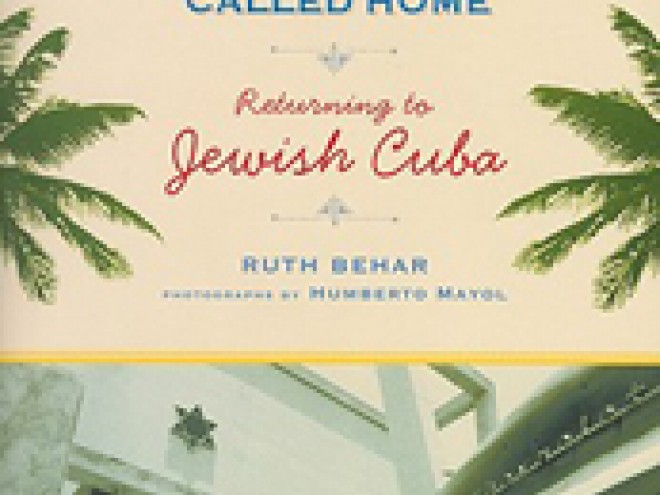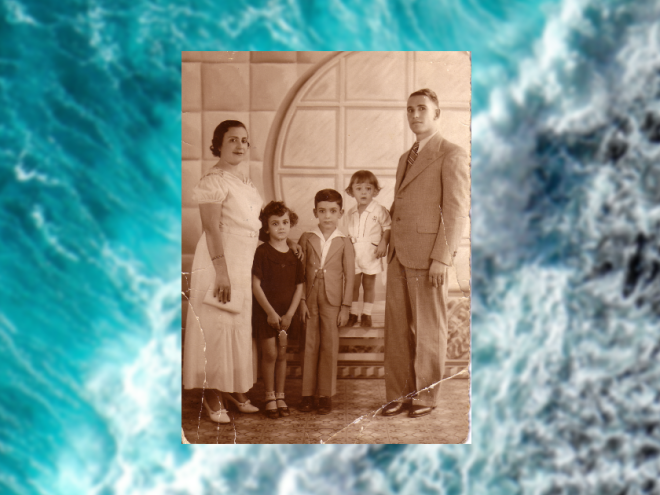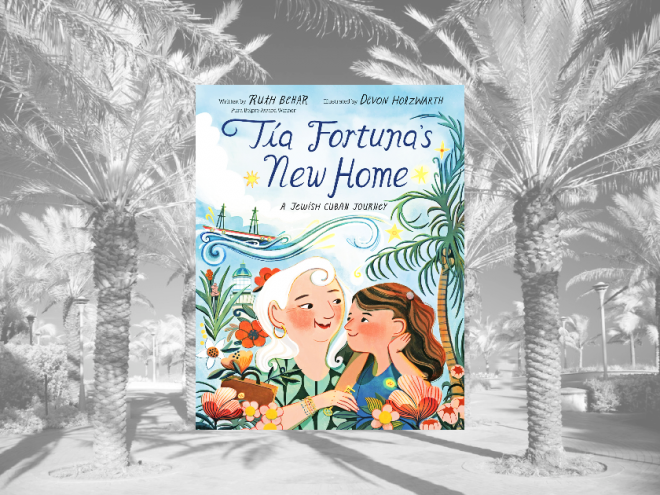
Stained glass window in a synagogue in Enschede, Netherlands
As we prepare to celebrate the High Holidays, to hear the shofar blasts and gather with family and friends for festive meals and wish each other a sweet new year, I’m excited in a way I’ve never been before. I’m now a grandmother – an abuelita – of two lovely girls, a toddler, and a seven-month-old baby. I hope to pass on to them as much as I can of my unique Jewish heritage. Mine is a many-layered diasporic heritage, Ashkenazi and Sephardic, with roots in Cuba, Poland, Russia, Turkey, and Spain. Within that heritage, I’ve sought out the stories of girls who cherish Jewish traditions while embracing their freedom. Now when I read Jewish children’s books, I look for stories that delve into lesser-known Jewish identities, stories I’ll want to read to my granddaughters.
I’m a cultural anthropologist by training and I started writing children’s books on the eve of turning sixty, just before becoming an abuelita. Somehow I knew my granddaughters were on the way. I live surrounded by souvenirs from my travels, in a house filled with Cuban art, Mexican textiles, Spanish pottery, and Turkish rugs. I find it a delight to delve into the visual world of picture books, where images and words blissfully come together.
Below are High Holiday picture books that children from ages three and up can enjoy, along with the adults reading the books. I wanted to see how new beginnings could be explored with an awareness of diverse cultures and settings. I looked for books that could appeal to kids being brought up religious, with a mix of traditions, or secular. I love finding Jewish children in stories who are excited about sharing the joy of the High Holidays with those who follow different traditions. Finally, I was drawn to stories that give voice to the range of emotions we feel on Rosh Hashanah, Yom Kippur, and Sukkot, experiencing everything from vulnerability to exuberance.
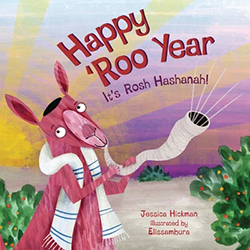
Happy ‘Roo Year: It’s Rosh Hashanah! by Jessica Hickman, illustrated by Elissambura
This rhyming board book offers young children a charming introduction to Rosh Hashanah, as seen from the perspective of kangaroos in the Australian outback. In a twist on stereotypical gender roles, it’s Dad Kangaroo who prepares the food, a feast that includes brisket and ends with honey cake. The art captures the afternoon’s purple light shining with hope.
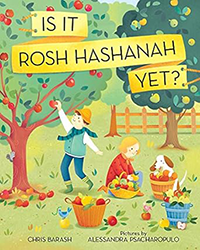
Is It Rosh Hashanah Yet? by Chris Barash, illustrated by Alessandra Psacharopulo
Joy emanates from this book – part of a series on Jewish holidays – through the bucolic art that evokes autumn: the harvest, apple picking, and a time when family and friends gather. You feel the sweetness of change in the air and the welcome of a new beginning.
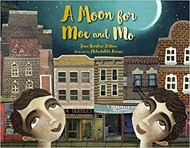
A Moon for Moe and Mo by Jane Breskin Zalben, illustrated by Mehrodkht Amini
In this story set in the neighborhood of Flatbush in Brooklyn, two boys, Moses Feldman (Moe) and Mohammad Hassan (Mo) meet amid the apricots, figs, dates, and nuts in the aisles of Sahadi’s while their mothers shop. It is a rare year when Rosh Hashanah and Ramadan coincide and the friendship of Moe and Mo brings their two families together to wish each other “Shalom” and “Salaam.” The book fittingly ends with recipes for rugelach and date cookies and the vibrant collage art leaps off the page and reveals how more than a tree can grow in Brooklyn.
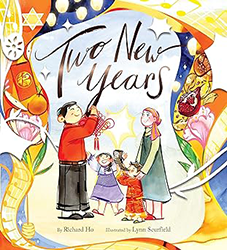
Two New Years by Richard Ho, illustrated by Lynn Scurfield
In a striking fusion of colors, symbols, and traditions, this book tells the story of a child whose mother is Jewish and father is Chinese and whose family celebrates Rosh Hashanah in the fall and Lunar New Year in the spring. Offering anthropological insight through a comparative lens that a child can understand, it’s revealing to see Rosh Hashanah through the eyes of a different tradition. This story opens the heart to all the ways you can be Jewish when love brings people together.
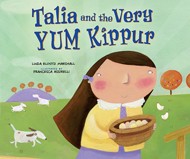
Talia and the Very Yum Kippur by Linda Elovitz Marshall, illustrated by Francesca Assirelli
This intergenerational story beautifully focuses on Talia and her Grandma as they prepare a break fast for the rest of the family who are praying at the synagogue. Talia hears “yum” Kippur, but the kugel they made can’t be eaten yet; she hears it’s a “fast” day, but the leaves fall from the trees so slowly. It’s all very puzzling until Grandma explains to Talia that it’s a time when you ask for forgiveness. Talia remembers a lie she told and her loving Grandma quickly forgives her with a hug. The humor and tenderness of this book is perfectly matched with art that feels magical, capturing the fairy-tale flow of time as Talia waits for the fast to end.
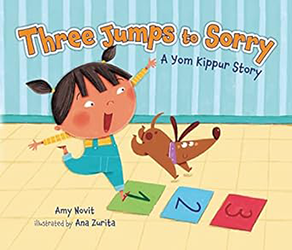
Three Jumps to Sorry: A Yom Kippur Story by Amy Novit, illustrated by Ana Zurita
A practical and active vision of how to say you’re sorry is offered here. Hannah’s mother wisely breaks down an apology into three parts and three jumps, teaching young ones what it truly means to say you’re sorry, which is to gain the empathy to understand the hurt you caused another person. Hannah learns to have empathy and wins our hearts. The art in this book is so endearingly cute that it makes contrition and forgiveness seem attainable by all.
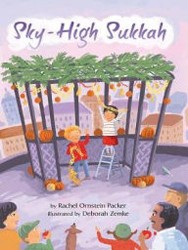
Sky-High Sukkah by Rachel Ornstein Packer, illustrated by Deborah Zemke
This urban Sukkot tale is inviting to a reader like me who grew up in New York apartment buildings without a backyard. I remember how my mother fashioned a tent-sukkah for my brother and me in our bedroom out of a sheet and two brooms. It was the best sukkah. In Sky-High Sukkah, Leah shares her sadness that she can’t have a sukkah with Al, who owns a fruit market on her street. He has never heard of a sukkah and she has to explain what it is. Soon she teams up with her friend, Ari, whose rooftop is available, but new challenges arise that seem insurmountable. While the neighbors all join in to help, it is Al who comes to the rescue to make their sukkah truly magical, showing how by sharing Jewish traditions we can welcome more people into our tent and deepen the joy. The palette of soft gray and faded violet contrasts with the bright colors of the fruit and brings out the beauty of the city.
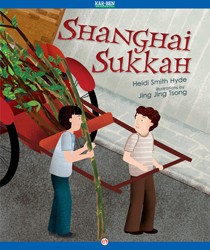
Shanghai Sukkah by Heidi Smith Hyde, illustrated by Jing Jing Tsong
I am fascinated by the story of European Jewish immigration to Shanghai on the eve of WWII, perhaps because it is reminiscent of the migration of my family to Cuba, where they found refuge and respect for their cultural traditions. In Shanghai Sukkah, Marcus misses Berlin, but his friendship with Liang cheers him. He learns of the Moon Festival, which is a harvest holiday like Sukkot. Again, the rooftop sukkah isn’t quite what Marcus dreams, until Liang surprises him with a gift of lanterns that light it up. Here too, we are given an uplifting vision of friendship across cultural borders and the message that as Jews we are not alone, that others care about us in times of antisemitism.
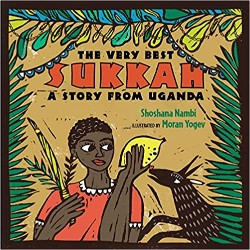
The Very Best Sukkah: A Story from Uganda by Shoshana Nambi, illustrated by Moran Yogev
This prize-winning story about the Ugandan Abayudaya community’s annual sukkah contest highlights a little-known Jewish community celebrating Sukkot. After intensely competing with one another to see who can make the best sukkah, Shoshi comes to realize that when the entire village works together, there is good reason to sing “Hinei Ma Tov — See How Good It is.” Moran Yogev’s linoleum prints are richly patterned and the deep blue, green, and yellow hues on which the words sit give the book a folkloric quality that is utterly gorgeous.
While not precisely stories about the High Holidays, I want to end by recommending three books that offer Sephardic and Mizrahi perspectives on the quest for new beginnings while holding on to memories of lost homes.
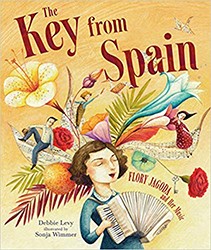
The Key from Spain: Flory Jagoda and Her Music by Debbie Levy, illustrated by Sonja Wimmer
I can find no better inspiration to learn a few Sephardic songs with our young ones to celebrate the new year than the moving story of Flory Jagoda, a Sephardic Jew born in Bosnia.
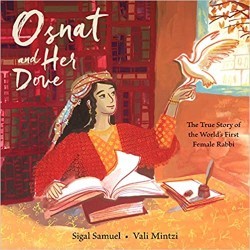
Osnat and Her Dove: The True Story of the World’s First Female Rabbi by Sigal Samuel, illustrated by Vali Mintzi
At a time of renewal, let us teach our children about the world’s first female rabbi, born in Kurdistan. She is an important reminder that girls long ago were also resilient and played a major role in passing on our traditions to future generations.
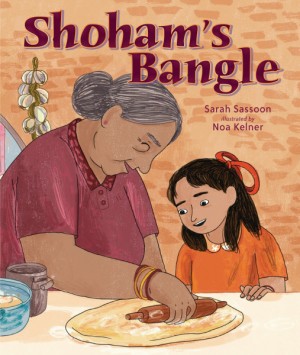
Shoham’s Bangle by Sarah Sassoon, illustrated by Noa Kelner
Fleeing Iraq, her birth land, is heartbreaking for Shoham. The family must leave everything behind, including the golden bangles that she and her Nana always wore. But Shoham will discover that the bangles travel to Israel in the pitas that her Nana baked for the journey. In the promised land, she will begin anew, remembering the place she first called home.
Ruth Behar, the Pura Belpré Award-winning author of Lucky Broken Girl and Letters from Cuba, was born in Havana, Cuba, grew up in New York, and has also lived in Spain and Mexico. Her work also includes poetry, memoir, and the acclaimed travel books An Island Called Home and Traveling Heavy. She was the first Latina to win a MacArthur “Genius” Grant, and other honors include a John Simon Guggenheim Fellowship and being named a “Great Immigrant” by the Carnegie Corporation. An anthropology professor at the University of Michigan, she lives in Ann Arbor, Michigan.

